I moved to Kuala Lumpur last year. One of my favourite things to do, when I feel like braving the humidity, is to discover the city on foot. Below you can follow me on a walk I took this past weekend.
Where it all began
I love the fact that in this photo you can visibly pinpoint the spot where Kuala Lumpur began. The first settlement appeared right here at the junction of the Klang and Gombak Rivers. The name Kuala Lumpur means ‘muddy estuary’.

I've often thought it a shame that until now there’s been no attempt to exploit the river as a waterfront. In fact if you walk along most accessible stretches of it, you get the impression that the city is actually turning its back on the river, the buildings facing away from the water, and life happening up on the streets, away from the sad and abandoned river banks.
The truth is that the river is heavily polluted, with water standards at levels ‘not safe for bodily contact’. Not surprising then that people don’t chose it as a destination for their Sunday afternoon stroll!
Hopefully though this is about to change. There’s a new government project called ‘River of Life’ which plans to clean up the water and turn the banks into pleasant places to walk, sit and socialise.
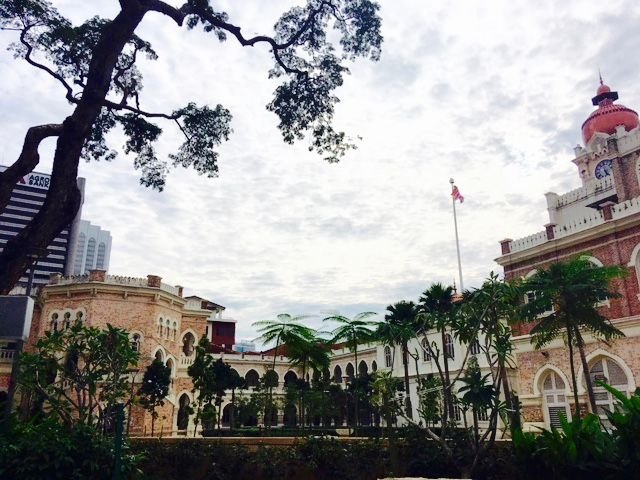
The section behind the Sultan Abdul Samad building, where we began our walk, is one of the first places to be cleaned up – the banks at least, where walkways and a new pedestrian bridge have been installed. However the water in the river below still looks quite dirty to me.
When you’re walking along this section you actually can’t see much of the river. Instead what you see is a fish pond, or perhaps 'fish canal' is the better phrase, that’s been installed halfway between the pedestrian walkway above and the river below.
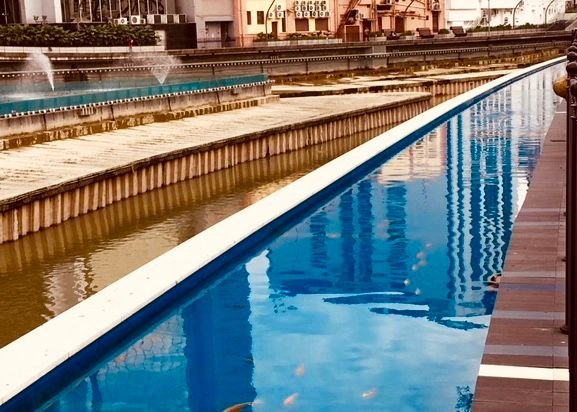
I suppose this is to block the view of the still dirty river water. I hope this is just temporary, because there doesn’t seem much sense in walking next to this historic river, only to have a bright blue tropical fish tank in your line of sight! But I suppose as a halfway house measure it is better than nothing.

The Sultan Abdul Samad building, even seen from the back as in these photos, is quite impressive. It’s a colonial building, styled in a mixture of gothic, Italian and Islamic elements, which used to house the British administration. As a British person I always have mixed feelings seeing this kind of evidence of our colonial past. The building itself is quite beautiful really, and I like the fact that there has been an effort to incorporate architectural details from the region. But I cannot say it provides an unmitigated source of pleasure; on the contrary it makes me feel quite uncomfortable to see it standing proudly there in the centre of Kuala Lumpur, evidence of my country's presence in a place where it never belonged.


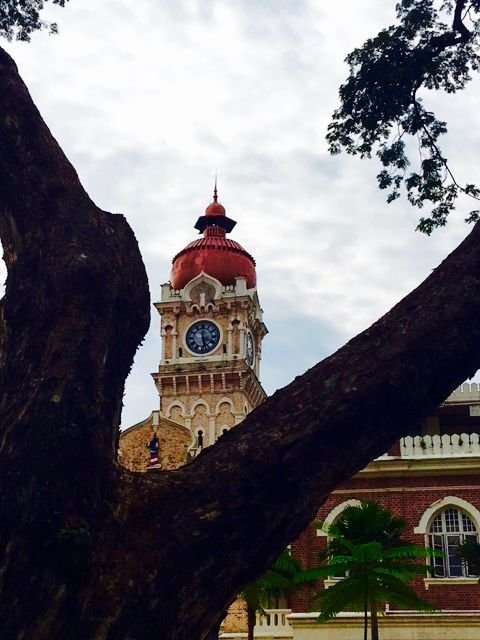
On the opposite bank is the Masjid (meaning mosque in English) Jamek Sultan Abdul Samad. This is one of the oldest mosques in Malaysia. In the background is the famous KL Tower.
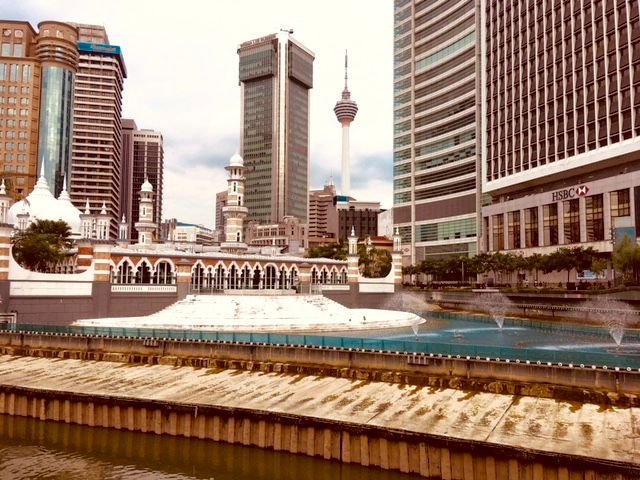
You can see how the mosque is dwarfed nowadays by the modern skyscrapers behind it.

I love this mix of old and new, the river marking the beginning point and the skyscrapers the bustling new Kuala Lumpur.
Street Art
I've written about the street art in Malaysia before. Every time I walk in Kuala Lumpur I have my eyes peeled for new examples. Here are just a few I saw on the walk today.
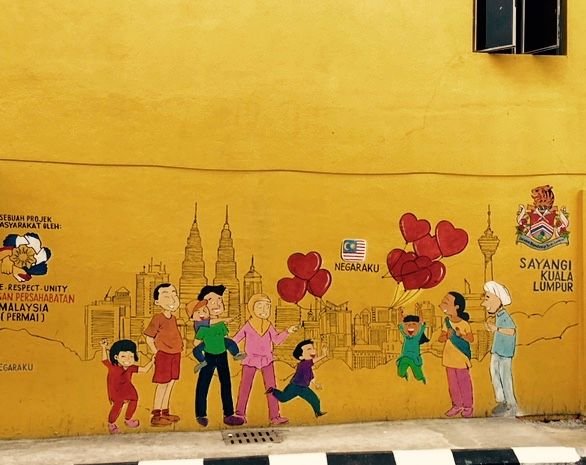
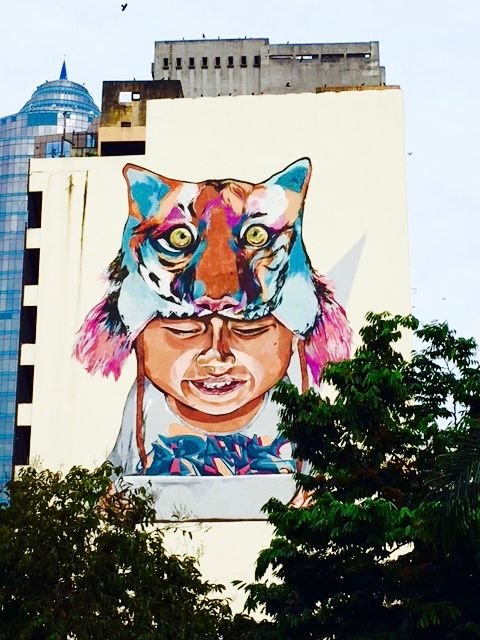
This last piece (above), by Anokayer and Yumz, is quite famous. It shows a boy wearing a tiger's head hat. This hat is supposed to represent Malaysia. If you look closely you will see that the boy is looking down at his handheld device. The artwork is supposed to represent the boy moving into the modern age, while at the same time not forgetting his roots, as represented by the hat.
Looking at this street art I thought back to the start of the walk, when I looked out over the conjunction of the Klang and Gombak rivers to the site of the origin of Kuala Lumpur. I started to see the project to revitalise the river in a deeper way, as an important process by which this fast growing city can acknowledge and reclaim the roots that lie at the heart of it.
Worshipping Ganesha
Turning up a little side street on the way back home we heard the sounds of ringing bells, drums banging and an instrument that sounded a bit like an oboe. The sounds were coming from this Hindu temple.
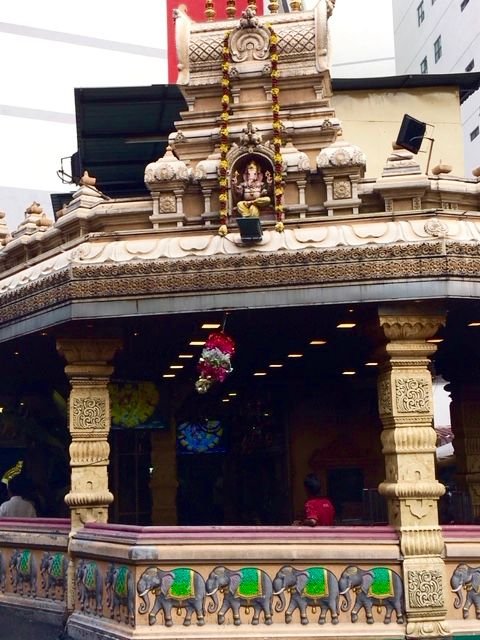
This particular temple is dedicated to the elephant god Ganesh. You can see his image up there on the top of the temple. Ganesh is the god of prosperity, fortune and success. He is the Remover of Obstacles and the Lord of Beginnings.
I loved this detail of the brightly coloured elephants that run around the bottom wall of the temple.
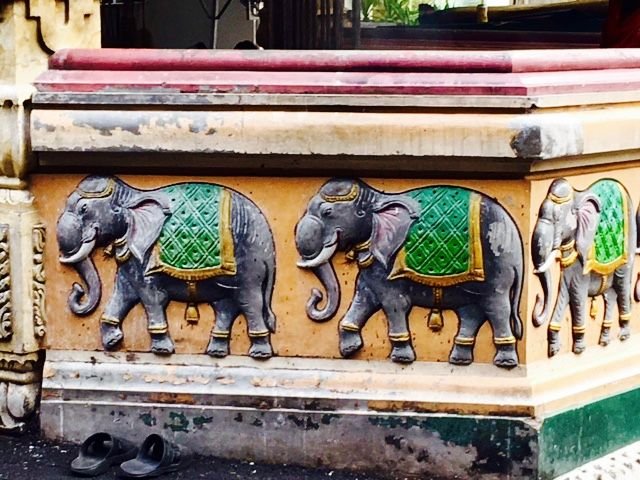
One of the things devotees do is smash coconuts. Here's a pile of the broken shells.
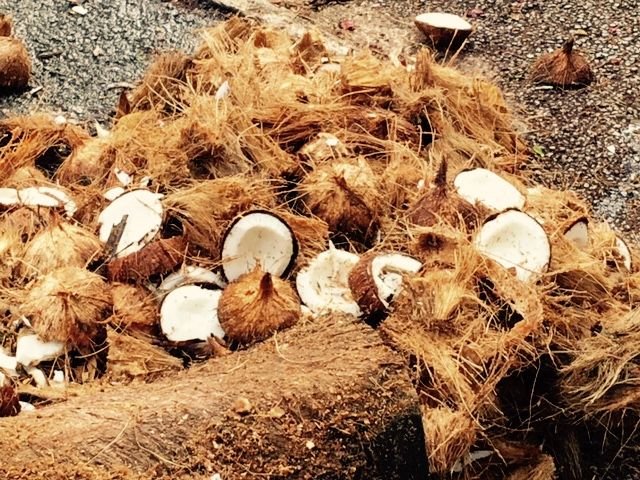
I found many explanations for why the coconut is smashed during these ceremonies. I read that the hard shell of the coconut represents the human ego, that we need to smash it in order to achieve anything good. Just as it takes a great deal of effort to smash open a coconut shell, so it takes hard work to break down our egos. But the results are worth it once you reach that creamy coconut flesh!
Other sources report that the effort of smashing open the coconut shell represents how difficult it can be to overcome obstacles. Although Ganesh is the Remover of Obstacles it doesn't mean he will remove them without any effort whatsoever on your part. You can be assured, however, that if you try your hardest, Ganesh will accompany you, and eventually you will achieve your goal.
Finally I read that the water inside the coconut is considered very pure unlike anything else you can find these days, which is treated and processed in one way or another, or as in the case of the river water, so heavily polluted that it is unfit for human contact let alone consumption. So only the coconut water is considered pure enough to offer at the temple.
The roots
Rounding the corner beyond the temple we came across a street full of these trees.
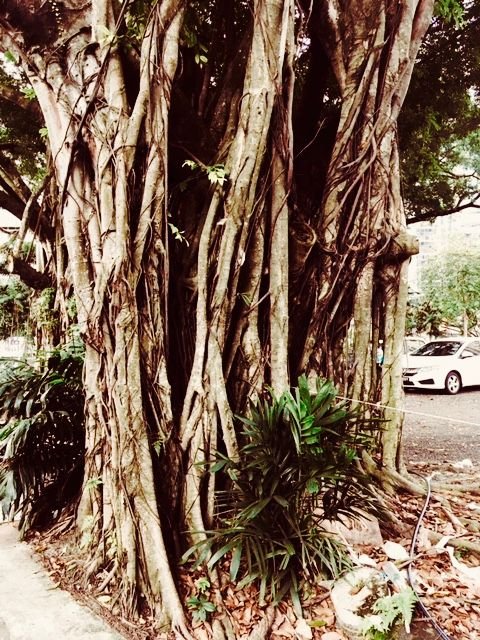
I believe that they are banyan trees. They are very impressive looking, composed of a mass of aerial roots.
There are many legends about the banyan tree in Asia. One of these holds that it is immortal, the belief being that its roots carry on eternally into the ground, and that even if it is chopped down it will grow again from those roots deep within the earth.
Thinking back to the start of the walk, I see the river as like the banyan tree, its waters connecting present-day Kuala Lumpur, flowing back through its history, to its origins. Although it has been badly neglected, the waters gradually suffocated by pollution, the project to revive the river brings hope that the waters will once again flow clean through the city, bringing with them a resurgence of vibrant life to the banks of the Klang, a never-ending integration of past and future.
Thanks for joining me on this walk through part of Kuala Lumpur! I would love to hear what you think, especially if you have any more insight into the coconut smashing ritual, or stories about the banyan tree.
All photos by @freewheel
